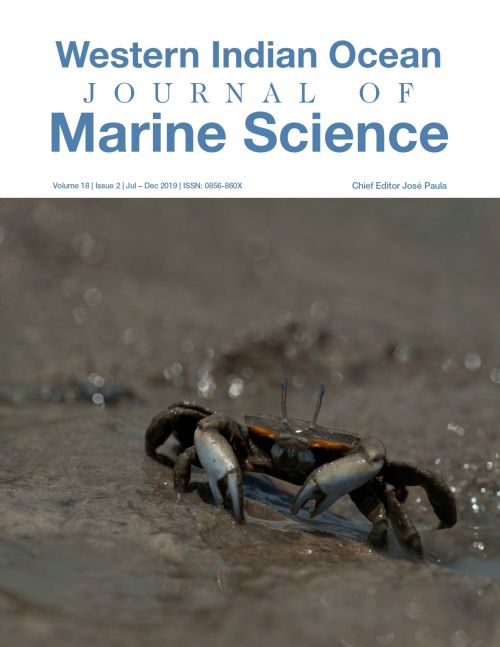Main Article Content
Biophysical factors influencing the choice of nesting sites by the green turtle (Chelonia mydas) on the Kenyan coast
Abstract
The green turtle (Chelonia mydas) is the most common sea turtle nesting along Kenya’s coastline. Varying biophysical factors influence choice of nesting sites where eggs are laid. This study was conducted between February and November 2016 and was designed to establish the relationship between numbers of C. mydas nests on the beach and biophysical variables such as vegetation cover, organic matter content (OMC), beach width, and beach slope. Multiple regression analysis was employed to assess the factors that contribute to the number of C. mydas nests on a beach. This analysis did not allow prediction of the number of nests in a statistically significant way (F (4, 26) = 0.094, p > 0.05, R = 0.120). However, there was a decrease in the number of nests with increased vegetation cover (b = - 0.013), OMC (b = - 8.114), beach width (b = - 0.089) and slope of the beach (b = - 0.352). Approximately 70% of nests occurred on beaches with medium and fine sand. Beaches with intense human activities were associated with high OMC which significantly affected the number of nests on the beach. It is therefore recommended that existing laws should be enforced to control beach development and human activities along the Kenyan coast to protect nest sites. Additionally, long term monitoring should be put in place to evaluate the impact of human disturbance on the favourable biophysical factors influencing the number of nests on a beach, as a management tool in the conservation of C. mydas.






